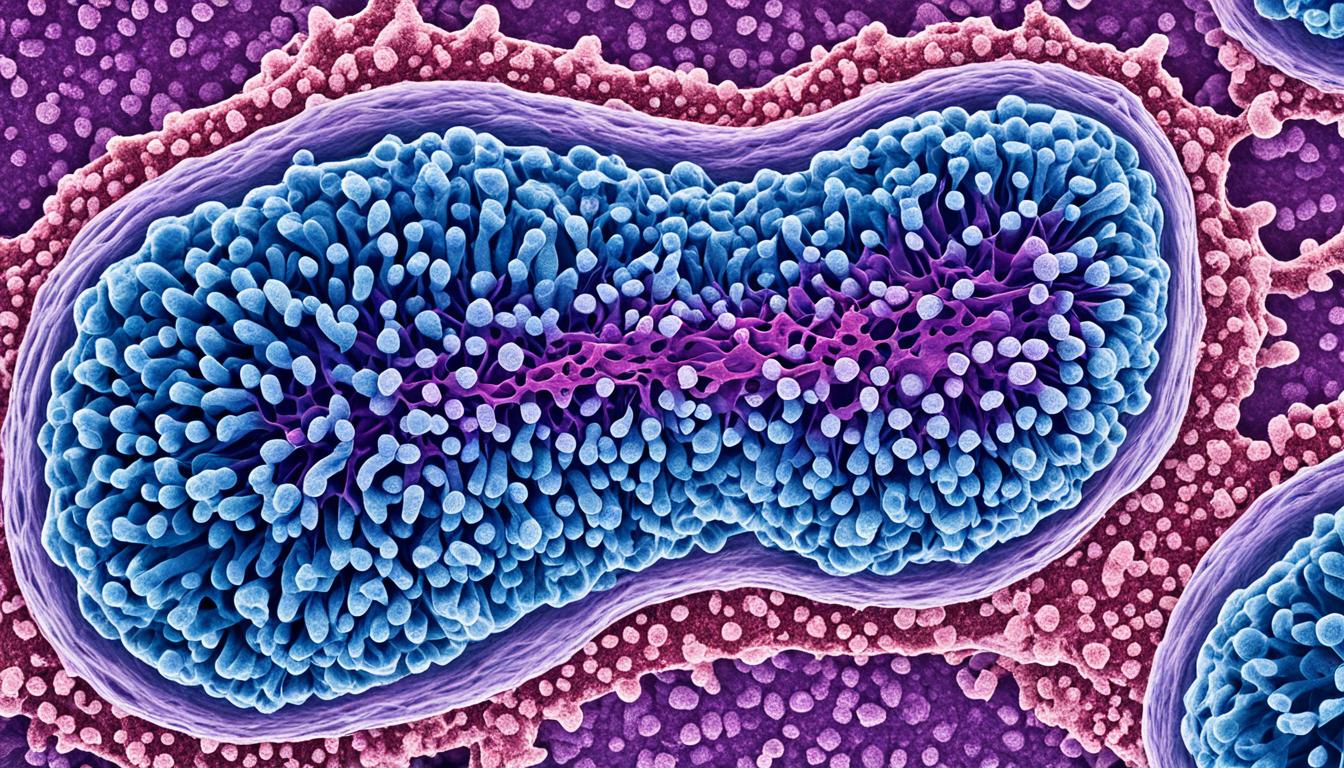Epithelioid sarcoma is a rare soft tissue tumor mainly found in young adults. It appears as a small, soft mass in the arms or legs. This can include the fingers, hands, forearms, or feet.
Doctors use a biopsy to diagnose epithelioid sarcoma. This test confirms the presence of tumor cells. They also look for specific changes in proteins. A common genetic change in this cancer is losing the SMARCB1 gene.
Treating epithelioid sarcoma often involves removing the tumor with surgery. Doctors aim to remove it with healthy tissue around it. This can be followed by radiation or chemotherapy. Stem cell therapy is also being studied as a possible treatment.
Key Takeaways:
- Epithelioid sarcoma is a rare soft tissue tumor that mainly affects young adults.
- It appears as a small, soft mass in the arms or legs.
- Diagnosis includes a biopsy and testing for certain proteins.
- A common genetic change in this cancer is losing the SMARCB1 gene.
- Treatments can involve surgery, radiation, or chemotherapy.
- Doctors are looking into using stem cell therapy for this cancer.
Symptoms and Diagnosis of Epithelioid Sarcoma
Epithelioid sarcoma is a rare type of cancer that mainly affects young adults. It’s important to know its symptoms and get a diagnosis early. This way, the right treatment can start soon. We’ll cover the signs of epithelioid sarcoma and how doctors figure out if someone has it.
Symptoms of Epithelioid Sarcoma
With this cancer, you might see small, soft lumps in the fingers, hands, or feet. These lumps grow slowly and usually don’t hurt. Sometimes, people don’t notice them right away. This can make getting a diagnosis take longer.
It’s crucial to remember these signs might look like other skin issues. But because epithelioid sarcoma is rare, you should think about this type of cancer if you see these symptoms. Be sure to get checked by a doctor for the correct diagnosis.
Diagnostic Procedures
To check if someone has epithelioid sarcoma, a doctor will do a tissue biopsy. This involves taking a small piece of the lump for lab testing. A scientist will look at the tissue under a microscope. They’re checking for certain cell patterns that show it’s epithelioid sarcoma.
Doctors might also check for INI1 protein with a special test. A certain way of staining can show if INI1 is missing, which happens a lot with this type of cancer. This test helps confirm if it’s epithelioid sarcoma and not something else.
A correct diagnosis is key for the best treatment. After confirming the cancer, the doctor might do more tests, like imaging scans. These tests show how far the cancer has spread and help plan the next steps for treatment.
Table: Summary of Symptoms and Diagnostic Procedures for Epithelioid Sarcoma
| Symptoms | Diagnostic Procedures |
|---|---|
| Presence of small, soft masses or clusters of nodules in the distal limbs | Tissue biopsy |
| Relatively painless tumors | Immunohistochemical staining of INI1 protein |
Causes and Prognosis of Epithelioid Sarcoma
Scientists are not yet sure what causes epithelioid sarcoma. They think genetic changes, like in the SMARCB1 gene, might be a key. When the SMARCB1 gene doesn’t work well, it could help epithelioid sarcoma get worse.
Knowing about these genetic changes and more can tell us a lot about a patient’s outlook. Things like the size of the tumor, if it’s spread to lymph nodes, or if there’s metastasis matter. So does the look of the cancer cells under a microscope.
If a patient is young, female, or has a tumor far from the body’s core, that’s good news. So is when doctors can take out the whole tumor. But even with these good signs, epithelioid sarcoma can come back. And when it does, it’s often very close to where it started. This makes it tough to manage over time.
Factors Influencing Prognosis of Epithelioid Sarcoma:
- Tumor size: Larger tumors could mean a harder fight ahead.
- Tumor location: Growth on the ends of limbs might have a better chance than near the center.
- Lymph node involvement: Finding cancer cells in lymph nodes might mean things could be tough.
- Metastasis: When cancer spreads to other parts, it’s not good news for survival.
- Histologic grade: Cancers that look more aggressive under the microscope might not respond as well to treatment.
Knowing all these facts can make treatment choices clearer. It helps patients and their doctors understand what to expect. But staying on top of check-ups is crucial. It’s the best way to catch a recurrence early and act fast with the right care.
Conclusion
Epithelioid sarcoma is a rare, aggressive soft tissue cancer affecting young adults. It shows as small masses on their limbs. Detecting it early is key to helping patients.
Treatments include surgery, radiation therapy, and chemotherapy. These methods aim to reduce or stop the cancer from spreading. Doctors are also looking into stem cell therapy as a new approach.
Stem cell therapy might help by replacing bad cells with new ones. This could lead to better results for patients with epithelioid sarcoma.
Overall, finding it early and using various treatments is vital. With new therapies like stem cells and current treatments, there’s hope for better outcomes against this rare cancer.

